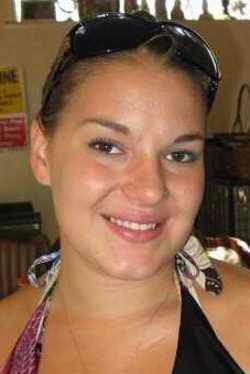- Lake County News reports
- Posted On
Wine Alliance distributes proceeds to beneficiaries of 2011 Lake County Wine Auction

- Lake County News reports
- Posted On
Kelseyville man arrested for meth possession, probation violations
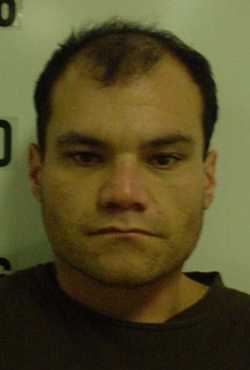
KELSEYVILLE, Calif. – A probation search this week by the Lake County Sheriff’s Narcotics Task Force and the Lake County Probation Department resulted in one arrest and the seizure of 14.7 grams of methamphetamine.
On Wednesday at approximately 8:30 am, narcotics detectives and probation officers conducted a probation search where 29-year-old Fernando Gabriel Parra of Kelseyville – who is on felony probation – was residing, according to Sgt. Steve Brooks.
When narcotics detectives entered the home, Parra was located and detained without incident, Brooks said.
A sheriff’s narcotics detection K9 alerted on a nightstand dresser drawer in one of the bedrooms. Brooks said narcotics detectives conducted a search of dresser drawer and located approximately 14.7 grams of methamphetamine, which was packaged in 24 plastic baggies.
Parra was arrested for possession of a controlled substance for sales, violation of a court order preventing domestic violence and probation violation, Brooks said.
Parra was transported to the Lake County Hill Road Correctional Facility and booked. Jail records indicated he remained in custody on Saturday on a no-bail probation hold.
The Sheriff’s Narcotics Task Force can be contacted through its anonymous tip line at 707-263-3663.
Follow Lake County News on Twitter at http://twitter.com/LakeCoNews, on Tumblr at www.lakeconews.tumblr.com, on Google+, on Facebook at www.facebook.com/pages/Lake-County-News/143156775604?ref=mf and on YouTube at www.youtube.com/user/LakeCoNews .
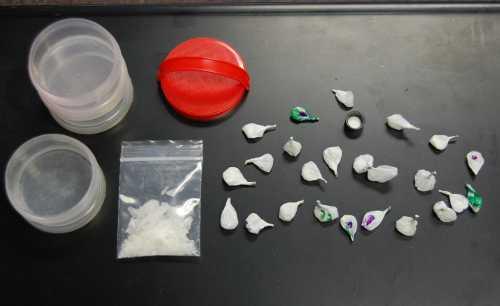
- Lake County News reports
- Posted On
CHP plans Christmas Maximum Enforcement Period
“As you prepare for the holiday traffic and winter weather, remember to plan ahead and leave yourself some extra time to make the trip,” said CHP Commissioner Joe Farrow. “Rest assured that the CHP will be out there to assist you whenever there is a need.”
Throughout their holiday travels motorists may encounter a number of CHP officers who begin their annual Christmas Maximum Enforcement Period (MEP) on Friday, Dec. 23, at 6:01 p.m.
The CHP will continue the holiday enforcement effort through Monday, Dec. 26, at 11:59 p.m.
“This time of year more people travel, celebrations increase and the weather can be a challenge,” said Commissioner Farrow.
Last year during the Christmas holiday weekend, four people were killed in collisions in California, according to the CHP.
One week later, 25 people were killed in crashes during New Year’s weekend; half of those who died were not wearing a seat belt, the CHP reported.
In addition, the CHP said it made 658 arrests for driving under the influence during the Christmas MEP and 961 arrests the following holiday weekend.
“It’s important to remember as the holiday celebrations kick into high gear during the next couple of weeks, always designate a driver before the party begins,” added Commissioner Farrow.
The CHP will conduct a similar MEP effort over the New Year’s holiday weekend which begins Friday, Dec. 30, at 6:01 p.m. and continues through 11:59 p.m. on Monday, Jan. 2, 2012.
Follow Lake County News on Twitter at http://twitter.com/LakeCoNews, on Tumblr at www.lakeconews.tumblr.com, on Google+, on Facebook at www.facebook.com/pages/Lake-County-News/143156775604?ref=mf and on YouTube at www.youtube.com/user/LakeCoNews .
- Elizabeth Larson
- Posted On
Prayer vigil held for fire victims Friday

MIDDLETOWN, Calif. – A Friday evening prayer vigil in Middletown focused on bringing healing and help to two young men badly burned in a house fire on Tuesday.
Jordan Armstrong and friend Kevin Hart are being treated at UC Davis Medical Center in the wake of the fire, which destroyed Armstrong’s home at 18390 North Shore Drive in Hidden Valley Lake.
Several hours before the vigil on Friday, Hart emerged from a surgery in which doctors grafted skin onto his entire back and part of his head, according to the “Kevin’s Blood Drive” Facebook page at https://www.facebook.com/pages/Kevins-Blood-Drive/303291886377820, which his family set up to offer updates on his condition.
Hart, whose family reported that he suffered burns over 80 percent of his body, had undergone surgery previously on Wednesday, in which skin grafts were performed on his hands, forearms, feet and a portion of his chest.
Armstrong suffered burns over 30 percent of his body, according to the “Please PRAY for Jordan Armstrong” Facebook page at https://www.facebook.com/events/239085382830595/.
UC Davis officials reported Armstrong as being in “fair” condition on Thursday.
Both he and Hart are reported to be facing months of hospitalization and rehabilitation.
Hart, who has the O Positive blood type, is in need of blood transfusions, and his family is heading up a blood drive to make sure he has the supply he needs as he faces more surgeries in the months ahead.
The blood drive is through Blood Source, located at 3505 Industrial Drive, Santa Rosa, telephone 916-456-1500, www.bloodsource.org.
An effort is under way to bring a Blood Source mobile unit to the county to collect donations, friends said Friday.
A relief fund has been set up for Hart, Armstrong and their families at Silverado Credit Union, 1407 Main St., Suite 100, St Helena, CA 94574. Write “Account 509404” in the check’s memo area.
The Hidden Valley Community Church also is taking donations for Armstrong; checks can be sent to the Hidden Valley Community Church, P.O. Box 1049, Middletown, CA 95461, with “Jordan Armstrong” in the subject line.
E-mail Elizabeth Larson at This email address is being protected from spambots. You need JavaScript enabled to view it. . Follow Lake County News on Twitter at http://twitter.com/LakeCoNews, on Tumblr at www.lakeconews.tumblr.com, on Google+, on Facebook at www.facebook.com/pages/Lake-County-News/143156775604?ref=mf and on YouTube at www.youtube.com/user/LakeCoNews .
- Dennis Fordham
- Posted On
Estate Planning: Amending, restating or revoking one
So when does it make sense to amend, restate or revoke a trust and start over? Let us examine these alternatives.
A trust is amended when the settlor wishes to make revisions to particular terms within a trust. Each amendment is an overlay to each preceding one and to the original trust itself.
Naturally the more numerous amendments the more cumbersome reading and understanding the trust becomes.
Reasons to amend a trust include changing who becomes successor trustee or the distribution scheme.
Sometimes entirely restating the trust is desirable. A restatement is an amendment that completely rewrites the whole trust. It preserves the trust’s existence but with entirely new terms.
A restatement is desirable when a trust might have numerous inadequacies that require substantial corrections. Also, amending a trust with many prior overlapping amendments may require a restatement.
An advantage of the restatement is that trust assets do not have to be retitled in the name of a new trust. When many trust assets are involved a restatement can save time and money.
But sometimes it is necessary to revoke a trust and to transfer the assets into a new trust. Let us now see why.
Four reasons come to mind why a settlor might want a new trust rather than a restatement.
First, the settlor may not wish for the trust beneficiaries to receive copies of the prior amendments to the trust.
As a matter of law, when a settlor dies, the beneficiaries and heirs of the deceased settlor are all entitled to a copy of the original trust together with all amendments. This may be disagreeable to any settlor who prefers to keep the earlier amendments secret.
Second, the settlor may not wish to leave open the possibility that the most recent amendment (which might even be a complete restatement) could be destroyed by a dissatisfied beneficiary.
That is, someone might wish to discard the most current amendment in order to proceed under an earlier version of the trust. Titling assets over into a new trust with a new name and creation date cuts-off that possibility.
Third, with a joint trust (i.e., one settled by a married couple) the surviving spouse might decide to transfer her share into a new trust in the survivor’s name alone.
Although the surviving spouse can typically use a power of appointment to change who inherits what assets, the surviving spouse may or may not be able to make amendments to the provisions of the trust after the first spouse dies.
In the case of a blended family, the surviving spouse may wish to remove her assets from a joint trust into a new trust for the benefit of her own children to the exclusion of the step children.
Fourth, when the community property and separate property rights of one spouse in a joint trust assets are transmuted (changed) into the other spouse’s sole and separate property the trust is terminated and assets transferred into a single settlor trust.
This happens when assets are transferred between spouses in order to allow one spouse to qualify to receive Medi-Cal at a skilled nursing facility.
Amending or restating the original joint trust in that case is not a solution.
As discussed, the revocable living trust is flexible. Options to amend, restate or revoke are available.
Reviewing one’s estate plan every five years, sometimes sooner if circumstances necessitate, with a qualified attorney is a generally advisable.
Dennis A. Fordham, attorney (LL.M. tax studies), is a State Bar Certified Specialist in Estate Planning, Probate and Trust Law. His office is at 55 First St., Lakeport, California. Dennis can be reached by e-mail at This email address is being protected from spambots. You need JavaScript enabled to view it. or by phone at 707-263-3235. Visit his Web site at www.dennisfordhamlaw.com.
Follow Lake County News on Twitter at http://twitter.com/LakeCoNews, on Tumblr at www.lakeconews.tumblr.com, on Google+, on Facebook at www.facebook.com/pages/Lake-County-News/143156775604?ref=mf and on YouTube at www.youtube.com/user/LakeCoNews .
- Lake County News reports
- Posted On
Detective arrests Ukiah man for methamphetamine
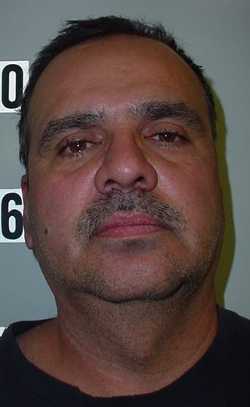
- US Geological Survey
- Posted On
The real lives of wild reindeer
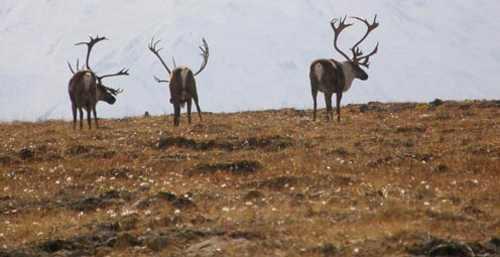
Caribou, North America’s wild reindeer, have lives apart from their famous role on Christmas Eve.
USGS caribou (and large mammal) expert Layne Adams, Ph.D., has studied caribou in Alaska for 30 years, helping land managers understand the best way to manage this important species. He has continuously studied caribou population dynamics and predator-caribou relationships in Denali National Park since 1986.
He offered the following details about the lives of caribou for those other 364 days of the year.
Why are reindeer sometimes called caribou and caribou sometimes called reindeer?
“Reindeer” and “caribou” are two common names for the same species (Rangifer tarandus), which occurs throughout the circumpolar North.
“Reindeer” is the common name for Rangifer in Europe and Asia, whereas “caribou” is the North American name.
The name “caribou” is a French derivative of a Native American word that means snow shoveler, which is a reference to the fact that caribou are often pawing through the snow to find food underneath.
Where do reindeer come from?
There are domestic reindeer in Alaska and Canada, but they actually are descendants of domestic Eurasian reindeer that were brought to Alaska in the late 1800s.
Caribou and reindeer are part of the deer family – related to deer, moose, and elk. But caribou are the only species where males and females both grow antlers. Females and young males have antlers that are similar in size, but older males (more than 2 or 3 years old) have antlers that are much larger.
Caribou and reindeer have been around for over a half-million years, originating in the early Pleistocene. Their ancestors lived at the same time as now-extinct woolly mammoths and saber-toothed cats.
What do you mean by “domestic reindeer”?
Reindeer were domesticated in northern Europe and Asia several thousand years ago and are the basis of herding cultures in those regions.
In Alaska, herding of reindeer started a little more than a century ago when 1,300 reindeer were imported from Siberia. At the time, caribou were scarce along the northwest coast of Alaska, and reindeer were brought over in an attempt to establish a herding economy among the Native people of western Alaska.
Reindeer herding expanded widely across the west and north coasts of Alaska, as well as into northern Canada, such that around 600,000 domestic reindeer occurred throughout Alaska by the 1930s.
During the Great Depression, the reindeer industry in Alaska collapsed and retracted to the Seward Peninsula of northwest Alaska where it continues today.
What do they eat?
Caribou forage on a variety of plants throughout the year. During winter, lichens make up the majority of their diet in most areas, with shrubs and grass or sedges making up the rest.
Lichens are a combination of fungus and algae that grow together. On alpine and arctic tundra ranges, caribou primarily feed on terrestrial lichens, sometimes called reindeer moss, that occur within the low-growing grasses and shrubs that make up the tundra vegetation.
In southern or boreal forest ranges, arboreal lichens that grow on trees are the predominant caribou forage.
During summer, caribou shift to eating a wide variety of green plants including grasses or sedges, growing shrubs, and a variety of small forbs or flowering plants. In some regions, mushrooms that are abundant in late summer are an important food for caribou.
Where can you find them in North America?
The species Rangifer tarandus occurs throughout the circumpolar North.
Caribou are widely distributed across northern North America ranging from the Canadian High Arctic islands to the mountains and boreal forests of the Canadian southern provinces.
A small, endangered population in northern Idaho and adjacent northeastern Washington are the southernmost group in North America.
How do they thrive in such cold temperatures?
Caribou are well adapted to living in cold regions and thrive in areas where winter temperatures can reach 70 or 80 degrees below zero.
Caribou have a very dense haircoat, made up of woolly underfur and hollow guardhair, over their entire body (except the very tip of their nose) that provides superior insulation.
They have relatively large, wide hooves for walking and digging through snow.
How many caribou species are there?
All caribou, as well as Eurasian reindeer, are the same species: Rangifer tarandus. In North America there are currently four subspecies of caribou recognized, although recent genetic analyses have blurred the distinction between these groups.
Functionally, there are essentially three “ecotypes” of caribou. The most numerous are those in the large migratory populations that occur from Alaska throughout much of northern Canada.
The small Arctic island caribou that occur in the Canadian High Arctic are the second ecotype.
And the third are the woodland caribou that occur in low numbers in scattered populations through mountains and boreal forests of the southern Canadian provinces, dipping in the United States in northern Idaho and Washington.
So caribou migrate – like birds?
Some larger caribou herds migrate long distances, 300 to 400 miles, between winter ranges in the northern fringes of boreal forest to their calving and summer ranges on the Arctic tundra and nearby northern mountain ranges.
At the other extreme, small boreal forest populations are sedentary throughout the year.
Many caribou populations behave in an intermediate manner between these two extremes.
Do reindeer really pull sleighs?
Reindeer were domesticated in Europe and Asia a few thousand years ago, but not caribou in North America.
Domestic reindeer are still common in Scandinavia and northern Russia. Domestic reindeer were brought to Alaska in the late 1800s and a small industry still exists on the Seward Peninsula and a few offshore islands.
While the main goal for domestic reindeer is providing meat and hides to local people, reindeer have been trained to pull sleds as a mode of transportation.
How many herds are in Alaska?
There are 31 caribou herds recognized in Alaska, with seven large migratory populations numbering 30,000 to 350,000 animals. These herds currently total about 750,000 animals and account for about 97 percent of the caribou in the state.
The remaining 24 herds are much smaller ranging from about 30 to 3000 animals each. Overall, Alaska’s caribou population was relatively low in the mid 1970s, numbering around 250,000 statewide.
Since then, caribou numbers have increased markedly to around 800,000 today. Such wide fluctuations in caribou numbers over the time scale of decades are not unusual.
How big are adult caribou?
In Denali National Park, where Adams currently studies caribou, mature adult males average about 500 pounds but can range from 400 to nearly 600 pounds.
Adult females are about half as big, averaging about 240 pounds (225- to 320-pound range).
In the large, migratory herds, caribou are generally smaller with adult males and females averaging about 400 pounds for males and 200 pounds for females.
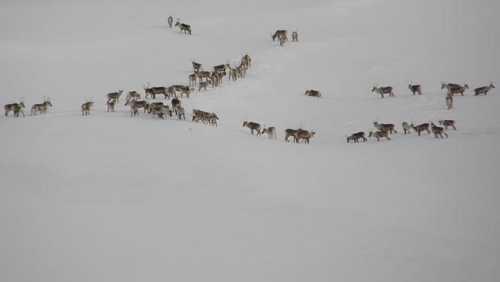
How big are calves?
Scientists have weighed quite a few newborn calves in Denali and on average they weigh about 17 pounds.
Calves are born in May and early June throughout Alaska, with most calves being born in any herd within about a 10-day period.
Caribou cows produce one calf each year and generally begin producing calves when they are 2 to 4 years old depending on the nutritional status of a given population.
In small herds, such as the Denali Caribou Herd, calves are subject to intense predation primarily by wolves and grizzly bears – fewer than half survive beyond 2 weeks of age.
In the large, migratory populations, early calf survival is markedly higher because the huge number of calves born over a brief interval can greatly swamp the ability of local predators to kill them.
What do caribou do in the summer?
After the females calve, caribou gather together in large groups to help them better avoid predators and to escape incredibly bothersome mosquitoes and parasitic flies.
The different herds of caribou stay together in the high mountains and along the Alaskan seacoasts where the winds and cooler temperatures help protect them from summer heat and those pesky insects.
After the number of insects decline in late July, the caribou herds scatter into smaller groups.
This is an important time for caribou – they use the time before winter arrives to feed as much as possible on remaining green grasses and sedges, willow leaves, and even mushrooms to regain their body weight.
What do they do in the fall and winter?
In the fall, caribou start migrating – when they migrate is dictated by cues in changing day length in combination with the onset of snowfall as the long winter begins. Fall is also the breeding season when mature bulls compete with each other for opportunities to breed with females as the females become receptive.
In winter, Arctic caribou generally migrate south into the northern fringe of the boreal forest or onto tundra winter ranges where terrestrial lichens are abundant.
Smaller mountain populations migrate out of the higher mountains onto the tundra and forest ranges adjacent to their mountainous summer ranges. Once on their winter range, caribou remain there throughout the winter, from about early October to late April.
What predators eat caribou?
Predation is an important force affecting the number of caribou, particularly in the smaller, more sedentary populations.
The large, migratory herds are able to reduce the effects of predation to some degree just due to their sheer numbers; the tradeoff is that they are more likely to be affected by the nutritional limitations of their ranges compounded by competition with their herd mates.
In general, the primary predators of caribou in Alaska are grizzly bears and wolves. Humans also are important predators of caribou.
Caribou are a mainstay of local subsistence in Bush Alaska, and a sought-after quarry for other Alaskan residents, as well as sport hunters from all over the world. On average, people harvest about 22,000 caribou a year in Alaska.
Grizzly bears are very effective at killing young caribou calves less than a couple weeks old, although they also kill older caribou on occasion.
Wolves are important predators of both young calves and older caribou. Other predators on caribou include black bears, golden eagles, wolverine, and coyotes.
A main goal of Adams’ research has been to understand the interrelationships of caribou and wolves in Denali National Park.
For caribou, an important factor that affects how many are killed by wolves is the amount of snow.
In years with less snow, caribou have large expanses of wind-blown, snow-free land to seek their food, and they have a much better chance of making it through the winter in good shape. They can also more easily evade wolves because they can run unimpeded.
During such times, wolves are able to primarily hunt those caribou that are old, injured, not in good shape or just plain unlucky. Adams has found that when it is harder for wolves to catch caribou, the wolf packs tend to be smaller.
But the wind shifts in favor of wolves when there is a lot of snow.
Caribou then have a harder time finding enough to eat because they have to dig through deep or crusted snow or must seek food on high mountain ridges where there is little snow, but also little food.
The caribou also have a harder time escaping from wolves in deep snow. In fact, wolves will sometimes chase caribou into areas with deep snow where the caribou are very vulnerable, even if they are in good shape.
In those years, wolf packs tend to be bigger and some packs produce more pups. In contrast, research shows that after severe winters, not only is a cow less likely to breed, but calves that are born are lighter, grow more slowly, and are more likely to be killed by predators in the weeks after they are born.
Is climate change affecting caribou?
Scientists know from their studies that weather may be the most important factor affecting the yearly cycles of large hoofed mammals (such as caribou, moose, and muskox) and their predators.
However, the longer-term effects of climate change are much more complex.
Unlike polar bears, which are highly dependent on sea ice that is declining due to warming temperatures, caribou are likely influenced by a wide variety of factors that will be affected by a warming climate, and some effects will be positive and some negative.
For example, with a warming climate, it’s expected that the growing season will be longer and provide caribou with green, nutritious forage earlier for a longer period of time for a positive effect.
However, research indicates that with increasing temperatures there are more fires on boreal forest winter ranges for caribou that will likely result in reduced availability of lichen, their primary winter forage, which tends to not grow back for about 70 to 80 years after a fire.
The overall effect of a warming climate on Alaska’s caribou will be dependent on how these and many other climate-related effects interact and that is very difficult to predict.
Follow Lake County News on Twitter at http://twitter.com/LakeCoNews, on Tumblr at www.lakeconews.tumblr.com, on Google+, on Facebook at www.facebook.com/pages/Lake-County-News/143156775604?ref=mf and on YouTube at www.youtube.com/user/LakeCoNews .
- Elizabeth Larson
- Posted On
Support effort forms for two young men injured in house fire
The fire at 18390 North Shore Drive Tuesday destroyed the home and injured resident Jordan Armstrong and his friend, Kevin Hart, according to the “Please PRAY for Jordan Armstrong” Facebook page.
South Lake County Fire Battalion Chief Scott Upton said investigators ruled the fire’s cause “accidental but undetermined.”
Armstrong and Hart both were flown to out-of-county hospitals with serious burns, as Lake County News has reported.
On Thursday, UC Davis Medical Center spokesperson Phyllis Brown said Armstrong was in “fair” condition.
His Facebook page reported that he suffered burns over 30 percent of his body.
Officials originally reported that Hart had been was taken to Santa Rosa Memorial Hospital. However, his family said on a Facebook page for him, titled “Kevin’s Blood Drive,” that he also was at the UC Davis Medical Center Burn Center, where he was undergoing skin graft surgeries.
The Facebook page in his honor said he has suffered burns over 80 percent of his body, along with a broken nose and swollen face. He has a tracheotomy to help his breathing.
Hart’s family and friends are requesting community members participate in a blood drive for Hart through Blood Source, 3505 Industrial Drive, Santa Rosa, telephone 916-456-1500, www.bloodsource.org. His blood type is O+ but his family is asking for all blood types to donate.
Both young men are reportedly facing months of hospitalization and numerous reconstructive surgeries, according to the two Facebook pages.
The Hidden Valley Community Church is taking donations for Armstrong. Checks can be sent to the Hidden Valley Community Church, P.O. Box 1049, Middletown, CA 95461, with “Jordan Armstrong” in the subject line. For more information the church can be contacted at 707-987-3510.
E-mail Elizabeth Larson at This email address is being protected from spambots. You need JavaScript enabled to view it. . Follow Lake County News on Twitter at http://twitter.com/LakeCoNews, on Tumblr at www.lakeconews.tumblr.com, on Google+, on Facebook at www.facebook.com/pages/Lake-County-News/143156775604?ref=mf and on YouTube at www.youtube.com/user/LakeCoNews .
- Lake County News reports
- Posted On
REGIONAL: Serial arsonist faces 20 years in state prison
Steven Gene Hensley, 36, faced felony charges of setting 19 fires in various locations in and around the Willits area starting on July 4 and continuing through Aug. 21.
District Attorney David Eyster, who has handled Hensley’s prosecution from its inception, on Thursday announced in the Mendocino County Superior Court a sentence agreement requiring Hensley to be sentenced to a stipulated 20 years in state prison when he returns to court on Jan. 27, 2012.
Hensley also will be required to register for life as an arson offender and each count of arson as admitted by Hensley is a “strike” for purposes of any future felony misconduct under the Three Strikes law.
Eyster also will be seeking an order in January requiring Hensley to pay restitution to property owners and Cal Fire in the amount of $354,138.
On Thursday Eyster thanked fire personnel around the county who day in and day out protect and serve public safety.
He was particularly complimentary of the investigation work undertaken in Hensley’s case by Cal Fire Captains Shawn Zimmermaker and Craig Dudley.
“The defendant had no way out of this one and realized it. We have Zimmermaker and Dudley to thank for this,” said Eyster.
Follow Lake County News on Twitter at http://twitter.com/LakeCoNews, on Tumblr at www.lakeconews.tumblr.com, on Google+, on Facebook at www.facebook.com/pages/Lake-County-News/143156775604?ref=mf and on YouTube at www.youtube.com/user/LakeCoNews .
- Dr. Tony Phillips
- Posted On
Space News: Kepler discovers Earth-size exoplanets

NASA's Kepler mission has discovered the first Earth-size planets orbiting a sun-like star outside our solar system.
The planets, called Kepler-20e and Kepler-20f, are too close to their star to be in the so-called habitable zone where liquid water could exist on a planet's surface, but they are the smallest exoplanets ever confirmed around a star like our sun.
The discovery marks the next important milestone in the ultimate search for planets like Earth.
The new planets are thought to be rocky. Kepler-20e is slightly smaller than Venus, measuring 0.87 times the radius of Earth. Kepler-20f is a bit larger than Earth, measuring 1.03 times its radius.
Both planets reside in a five-planet system called Kepler-20, approximately 1,000 light-years away in the constellation Lyra.
Kepler-20e orbits its parent star every 6.1 days and Kepler-20f every 19.6 days. These short orbital periods mean very hot, inhospitable worlds.
Kepler-20f, at 800 degrees Fahrenheit, is similar to an average day on the planet Mercury. The surface temperature of Kepler-20e, at more than 1,400 degrees Fahrenheit, would melt glass.
“The primary goal of the Kepler mission is to find Earth-sized planets in the habitable zone," said Francois Fressin of the Harvard-Smithsonian Center for Astrophysics in Cambridge, Mass., lead author of a new study published in the journal Nature. "This discovery demonstrates for the first time that Earth-size planets exist around other stars, and that we are able to detect them.”
The Kepler-20 system includes three other planets that are larger than Earth but smaller than Neptune.
Kepler-20b, the closest planet, Kepler-20c, the third planet, and Kepler-20d, the fifth planet, orbit their star every 3.7, 10.9 and 77.6 days.
All five planets have orbits lying roughly within Mercury's orbit in our solar system. The host star belongs to the same G-type class as our sun, although it is slightly smaller and cooler.
The system has an unexpected arrangement. In our solar system, small, rocky worlds orbit close to the sun and large, gaseous worlds orbit farther out. In comparison, the planets of Kepler-20 are organized in alternating size: large, small, large, small and large.
"The Kepler data are showing us some planetary systems have arrangements of planets very different from that seen in our solar system," said Jack Lissauer, planetary scientist and Kepler science team member at NASA's Ames Research Center in Moffett Field, Calif. "The analysis of Kepler data continue to reveal new insights about the diversity of planets and planetary systems within our galaxy."
Scientists are not certain how the system evolved but they do not think the planets formed in their existing locations.
They theorize the planets formed farther from their star and then migrated inward, likely through interactions with the disk of material from which they originated. This allowed the worlds to maintain their regular spacing despite alternating sizes.
The Kepler space telescope detects planets and planet candidates by measuring dips in the brightness of more than 150,000 stars to search for planets crossing in front, or transiting, their stars.
The Kepler science team requires at least three transits to verify a signal as a planet.
On Dec. 5 the team announced the discovery of Kepler-22b in the habitable zone of its parent star. It is likely to be too large to have a rocky surface.
While Kepler-20e and Kepler-20f are Earth-size, they are too close to their parent star to have liquid water on the surface.
"In the cosmic game of hide and seek, finding planets with just the right size and just the right temperature seems only a matter of time," said Natalie Batalha, Kepler deputy science team lead and professor of astronomy and physics at San Jose State University. "We are on the edge of our seats knowing that Kepler's most anticipated discoveries are still to come."
Dr. Tony Phillips works for the National Aeronautics and Space Administration.
Follow Lake County News on Twitter at http://twitter.com/LakeCoNews, on Tumblr at www.lakeconews.tumblr.com, on Google+, on Facebook at www.facebook.com/pages/Lake-County-News/143156775604?ref=mf and on YouTube at www.youtube.com/user/LakeCoNews .
- Lake County News reports
- Posted On
California
The California Department of Public Health said the man was in his late 30s.
“This death is a somber reminder that the flu can be a serious and even deadly disease,” said Dr. Ron Chapman, director of the California Department of Public Health and state public health officer, in a report issued by the agency. “I encourage Californians to get their flu vaccine to help protect themselves and their families.”
Statewide surveillance shows that influenza activity remains low in California. Typically, influenza peaks between January and March.
According to a study by the Centers for Disease Control and Prevention, flu-associated deaths nationwide range from an estimated 3,000 to 49,000 annually.
Lake County Health Officer Dr. Karen Tait told Lake County News in a Thursday e-mail that it has been a fairly quiet flu year so far as well for Lake County, where flu concerns are heightened due to the large senior population.
So far this flu season, vaccine totals for Lake County Public Health are “definitely fewer than last year,” said Tait.
However, she added that local pharmacies have done a lot of vaccinating this year.
She said Lake County has no special concerns due to this year’s flu season, but added, “the usual precautions are as important as always.”
Some of those usual precautions offered by health officials include staying home when sick; covering coughs or sneezes with an elbow or a tissue, and then properly disposing of used tissues; washing hands thoroughly with soap and warm water or an alcohol-based hand sanitizer; avoiding touching eyes, nose and mouth; and trying to stay healthy by eating right, staying hydrated, not smoking, and getting adequate rest and exercise.
The seasonal flu vaccine is recommended for everyone over 6 months of age and includes protection against the H1N1 strain, the California Department of Public Health reported. It is particularly important for people at high risk of complications, including pregnant women, people with chronic diseases such as diabetes, children and older adults to be vaccinated.
Chapman urged Californians to get their flu shot if they have not done so already. In addition, the nasal spray flu vaccine is available for healthy individuals ages two through 49 who are not pregnant.
“Since the flu season can last through May, it is not too late to get a flu vaccine,” Chapman said. “There is plenty of flu vaccine available.”
Tait said Lake County Public Health has plenty of the $2 vaccine available. The department can be reached at 800-794-9291 or 707-263-1090 for more information.
The California Department of Public Health offers more information on flu prevention at its Web site, http://www.cdph.ca.gov/programs/immunize/Pages/default.aspx.
Follow Lake County News on Twitter at http://twitter.com/LakeCoNews, on Tumblr at www.lakeconews.tumblr.com, on Google+, on Facebook at www.facebook.com/pages/Lake-County-News/143156775604?ref=mf and on YouTube at www.youtube.com/user/LakeCoNews .
LCNews
Responsible local journalism on the shores of Clear Lake.
Memberships:
 |
 |
 |
 |
 |
 |


